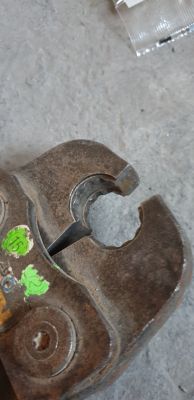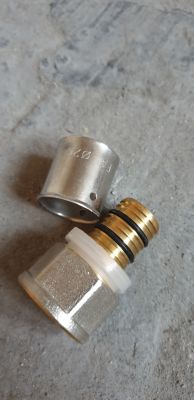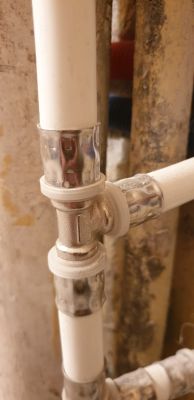ewoo wrote: Are you sure this is an F-profile jaw? The F profile leaves a different trace after tightening:
http://www.valsir.pl/wp-content/uploads/2017/04/B_SYSTEM-WIELOWARSTWOWY_L02629000_PL.pdf page 16.
I'm not sure, but it looks to me what you have for a copper pipe profile.
@ Reksio351 I searched, but it was the F-profile clamps, I was confused by the shape of the clamps imprint on the pipe on the Valsir website. A colleague who lent you the clamps brought or bought them abroad, because none of the well-known manufacturers like; Comap, Geberit, Henco, Herz, Kan, Kisan, Oventrop, Perfexim, Tweetop, Viega, Viessmann, Wavin do not use F-profile clamps for their pipes. Only Sanha and Valsir.
The guarantee of a tight connection is the use of a connector dedicated to a given pipe and clamping it with clamps with a profile recommended by the manufacturer of the pipe and fittings. The fact that it is not leaking now does not mean that it will not start in a moment. I know of cases of leaks revealed after a few months, which caused me, I do not know, but I know one thing, it is not profitable to leave it as it is. When it starts to fall down one by one, even without sudden spills flooding your neighbor, you will regret it anyway. A gentle leak will get wet, i.e. stains, then fungus and picking every few months and removing these defects, choosing a paint to paint over a piece or forging flagstone and constant muck at home.
As PLUMPI wrote, Castorama is not a place to buy good, proven materials. It is supposed to be cheap there and they do not care about anything else and that they give a guarantee? You lost it when the pliers touched the coupler. One renovation will consume more money than what you lost on this installation. Cut it out and throw it out, Buy a pipe and fittings, e.g. Wavin, rent a U-profile press and clamps from a rental company, use a calibrator when inserting the fittings and then you will sleep peacefully. Good luck.









